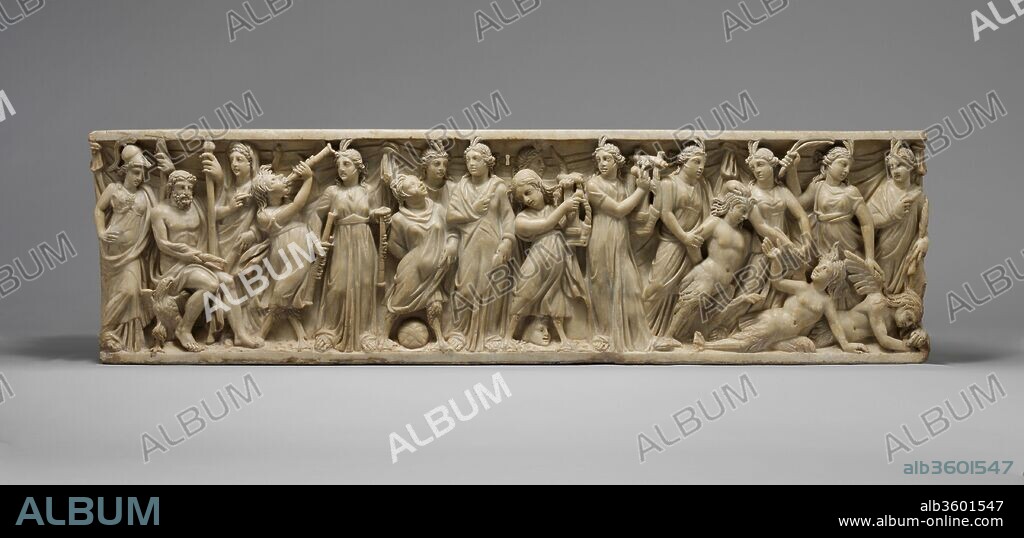alb3601547
Marble sarcophagus with the contest between the Muses and the Sirens

|
Añadir a otro lightbox |
|
Añadir a otro lightbox |



¿Ya tienes cuenta? Iniciar sesión
¿No tienes cuenta? Regístrate
Compra esta imagen.
Selecciona el uso:

Título:
Marble sarcophagus with the contest between the Muses and the Sirens
Descripción:
Ver traducción automática
Marble sarcophagus with the contest between the Muses and the Sirens. Culture: Roman. Dimensions: Overall: 21 3/4 x 77 1/4 x 22 1/2 in. (55.3 x 196.2 x 57.2 cm). Date: 3rd quarter of 3rd century A.D..
The deities Athena, Zeus, and Hera, assembled at the far left, preside over a musical contest betweenthe Muses and Sirens. The Muses, associated with
the highest intellectual and artistic aspirations, are defeating the Sirens, creatures that are half woman and half bird who lured men to destruction with their song.
A drawing of the sarcophagus was commissioned by Cassiano dal Pozzo, one of the most respected patrons of art and scholarship in Rome during the first half of the seventeenth century. It belonged at that time to the del Nero family, who apparently converted it into a chest with a keyhole cut into the upper center of the frontal panel and had their coat of arms, a rampant hound, carved on the short ends
of the sarcophagus.
Técnica/material:
Marble, Pentelic
Periodo:
Late Imperial, Gallienic
Museo:
Metropolitan Museum of Art, New York, USA
Localización:
ROMAN EMPIRE
Crédito:
Album / Metropolitan Museum of Art, NY
Autorizaciones:
Modelo: No - Propiedad: No
¿Preguntas relacionadas con los derechos?
¿Preguntas relacionadas con los derechos?
Tamaño imagen:
4800 x 2272 px | 31.2 MB
Tamaño impresión:
40.6 x 19.2 cm | 16.0 x 7.6 in (300 dpi)
Palabras clave:
 Pinterest
Pinterest Twitter
Twitter Facebook
Facebook Copiar enlace
Copiar enlace Email
Email
